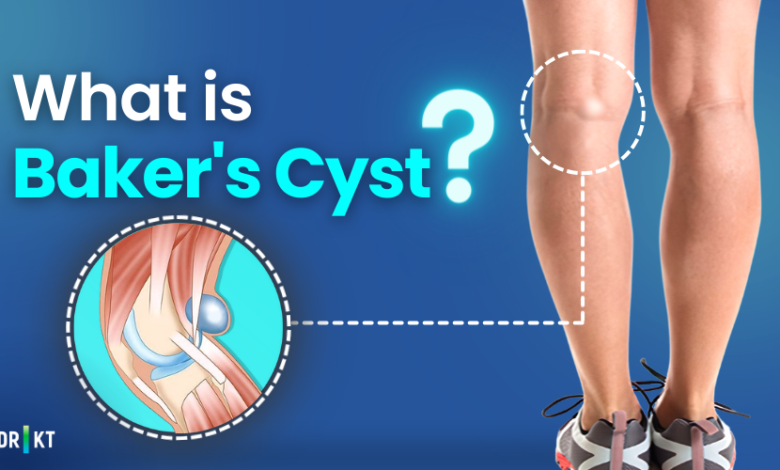
If pain and a feeling of tightness behind your knee interferes with physical activities in your daily life, or if you have a swelling behind your knee that you can feel in your hand even though there are no symptoms, this may be a sign of a baker’s cyst. Baker’s cyst, which can be seen in all age groups, is an indicator of various problems occurring in the knee joint, especially in adults, and if left untreated, more serious symptoms can be encountered with the bursting of the cyst.
This is in the continuation of this article; What is Baker’s cyst? Why does the back of the knee hurt? What causes baker’s cyst? What are the symptoms of baker’s cyst? Does baker’s cyst go away on its own? How is the diagnosis made? What are baker’s cyst treatment options, what happens if baker’s cyst bursts? You can find answers to questions such as.
Contents:
- What is Baker’s Cyst?
- What Causes Baker’s Cyst?
- What are the Symptoms of Baker’s Cyst?
- How is Baker’s Cyst Diagnosed?
- What You Should Know About Baker’s Cyst Treatment
- What kind of a process awaits you after baker’s cyst surgery?
What is baker’s cyst?
A baker’s cyst, also known as a popliteal cyst or synovial cyst, is a fluid-filled sac that develops in the popliteal region behind the knee joint. The cyst may cause swelling and tension behind the knee when the excess joint fluid (synovial fluid) accumulated in the knee for various reasons begins to overflow towards the popliteal region (Picture 1). So, what causes a baker’s cyst and what are these various causes or conditions that cause joint fluid to build up in the knee?

What causes baker’s cyst?
Although baker’s cysts can occur in any individual, they are most common in adults between the ages of 35 and 70 and in children between the ages of 4 and 7. In adults, baker’s cysts are most commonly associated with various types of joint rheumatism (such as rheumatoid arthritis, osteoarthritis-arthritis), meniscal tears, anterior cruciate ligament tears, overuse or injury of the knee. In other words, baker’s cyst develops due to various problems in the knee. In these cases, the overflow of the joint fluid, which increases due to degenerative conditions within the knee, towards the popliteal bursa leads to the formation of a baker’s cyst.
Unlike in adults, a baker’s cyst in children is caused by a herniation of the lining of the knee joint behind the joint capsule. However, it should be noted that the incidence of Baker’s cysts typically increases with age.
What are the Symptoms of Baker’s Cyst?
The most common symptoms of baker’s cyst in adults are swelling behind the knee, inability to fully extend the knee and pain behind the knee. The swelling becomes more prominent when the patient is standing (with the legs stretched); when the knee joint is bent at a 45-degree angle, the tension on the cyst decreases and this causes the swelling appearance to decrease or disappear. Some patients complain of a tense, egg-like swelling behind the knee.
Pain behind the knee can often increase when extending your legs, standing for long periods of time, bending your knees and during physical activities, which can interfere with the movement and range of motion of your knee joint.
However, it is important to note that a baker’s cyst can rarely burst due to increased pressure in the sac due to rapid fluid accumulation. In this case, the symptoms of a baker’s cyst may vary.
So, what happens if a baker’s cyst bursts? When the fluid in the burst cyst spreads down the knee to the tissues between the calf muscles, symptoms such as sharp pain in the knee and calf, a feeling of water flowing down the calf, swelling or redness in the calf can be seen. The most important point to remember here is that the above symptoms can be confused with deep vein thrombosis.
Baker’s cysts may not always cause symptoms, especially in children, and can sometimes be diagnosed incidentally during an examination.
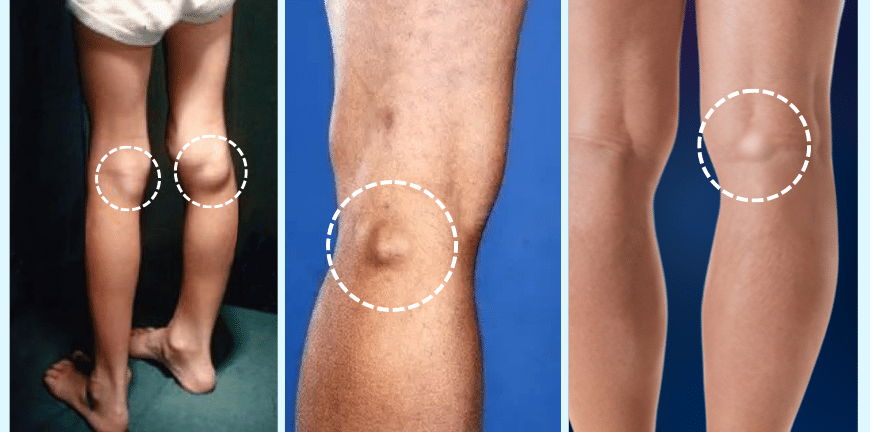
How is Baker’s Cyst Diagnosed?
People usually consult an orthopedic and traumatology doctor with complaints of swelling behind the knee and pain behind the knee. Detailed history, physical examination and imaging methods are used in the diagnosis of baker’s cyst.
During the physical examination for baker’s cyst, your doctor will check for swelling behind your knee, joint stiffness and limited range of motion. In addition, because some of the symptoms of a Baker’s cyst are similar to more serious conditions such as a blood clot, aneurysm or tumor, your doctor will be able to make a definitive diagnosis of a baker’s cyst by using X-rays, ultrasonography and magnetic resonance imaging (MRI).
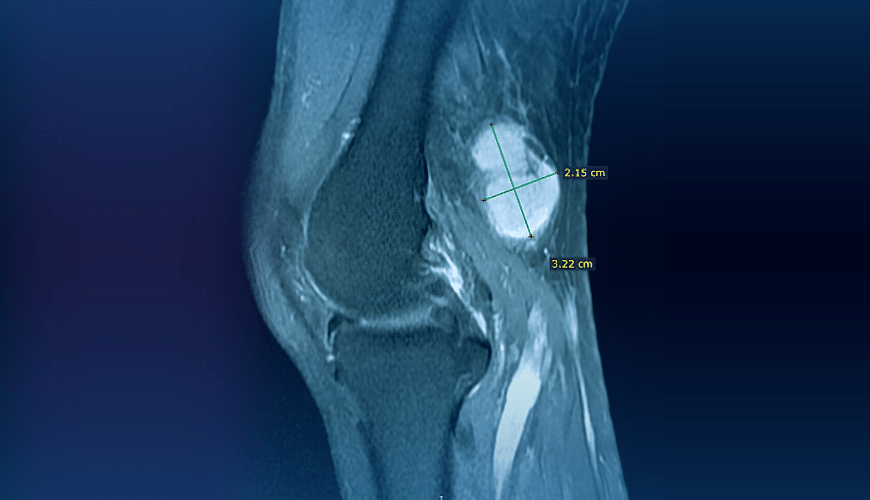
What You Should Know About Baker’s Cyst Treatment
After the diagnosis of baker’s cyst, the first question that arises in patients’ minds is “Will Baker’s cyst go away on its own?”. Indeed, baker’s cysts can sometimes disappear spontaneously. However, treatment is required for cysts that do not disappear and cause pain. For this reason, your orthopedic surgeon may find it appropriate to first evaluate non-surgical treatment options and treat the underlying causes of the baker’s cyst.
What are the Non-Surgical Treatment Options?
Non-surgical treatment options that can be applied in the treatment of baker’s cyst are as follows:
- Rest/change in activity: Your doctor may recommend that you avoid intense physical activity and rest the leg where the cyst has formed to relieve the symptoms of a Baker’s cyst. In addition, he or she may ask you to observe whether the cyst is getting bigger and other symptoms that may occur.
- Baker’s cyst ice treatment: An ice pack wrapped in a towel can be placed on the back of your knee to reduce swelling and relieve pain. Ice treatment can be applied for 20 to 30 minutes at regular intervals throughout the day.
- Physical therapy baker’s cyst physical therapy movements/exercises: can be used in combination with other treatment options to increase the range of motion of your knees, strengthen the muscles around the knee and maintain the function of the knee. However, you and your doctor should decide whether physical therapy is suitable for you.
- Non-steroidal anti-inflammatory drugs: In addition to rest and activity modification, the use of non-steroidal anti-inflammatory drugs such as ibuprofen and naproxen can help reduce pain and swelling.
- Steroid injection: If baker’s cyst is caused by arthritis, your doctor may recommend a cortisone injection into your knee joint to reduce inflammation.
- Aspiration (draining fluid from the cyst): With aspiration, your doctor numbs the area around the cyst and drains the excess fluid from the joint using a needle and syringe. During the aspiration procedure, ultrasound is often used to guide the placement of the needle.

How to Decide on Surgery for Baker’s Cyst Treatment?
Surgery is rarely necessary in the treatment of baker’s cyst. However, if you have complaints that do not go away with non-surgical treatment methods or if your cyst recurs after aspiration, your doctor may recommend surgery to remove the cyst or to treat other problems that can lead to a cyst in the knee, such as a meniscus tear or cartilage problem. The surgery is performed with two different techniques: arthroscopic (closed method) or open removal of the cyst.
Arthroscopic Surgery (Closed method)
During arthroscopic surgery, your orthopedic doctor will make small incisions under anesthesia and insert a small camera called an arthroscope into your knee joint. The camera images are displayed on a screen to guide your doctor during surgery. During this procedure, if there are other problems such as meniscus tears or other problems in the knee, they are also intervened.
Open Cyst Excision
For large cysts or Baker’s cysts that cause neurovascular problems, your doctor may perform an open surgical method to remove the entire cyst. Your doctor will decide which surgical method is appropriate for you in the treatment of baker’s cyst. However, Baker’s cysts can rarely recur after surgery. It is therefore important to follow the advice given by your doctor after surgery.
What kind of a process awaits you after baker’s cyst surgery?
If your baker’s cyst has been aspirated or you have had arthroscopic surgery, you will most likely be allowed to walk immediately after the procedure. However, your doctor may recommend that you avoid strenuous activities and wear a knee brace for a few weeks after surgery to immobilize your knee. He or she may also consider physical therapy to be appropriate for a period of time after surgery to help improve range of motion and strengthen the muscles around the knee.
The time needed to recover after surgery varies from patient to patient, depending on whether the underlying condition in the knee joint was treated during surgery. Most patients are able to return to all activities about 4 to 6 weeks after surgery.

If you are suffering from pain behind your knee, or if you have noticed a swelling behind your knee that you can feel in your hand despite the absence of pain, take action to take healthier steps. Remember that you may have a different and serious knee joint problem that underlies the excess secretion of joint fluid that causes a baker’s cyst. Treating this problem will help shrink the cyst.
You can contact us to get support from our specialist doctors in the diagnosis and treatment of baker’s cyst; you can send us the questions you are curious about on our social media accounts. You can find frequently asked questions in the rest of our article.
Frequently Asked Questions
1. Can Baker’s cyst go away on its own?
A baker’s cyst can sometimes disappear on its own. Mild symptoms can usually be controlled by avoiding the activities that trigger them. However, if the cyst is large and causes pain, you need treatment.
2. What happens if baker’s cyst is not treated?
Baker’s cysts are not dangerous. However, if left untreated, the cyst can grow and this can cause it to burst. When the cyst bursts, joint fluid can leak from behind the knee into the calf, causing severe pain, swelling and redness.

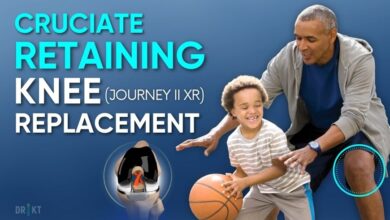

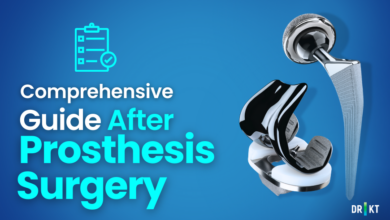

As I was doing my morning stretching exercises I felt a movement behind my left knee. I continued to exercise but it felt like something was in the wrong place & needed to be pushed back. Iam pretty active and iam 65 years old. My weight is 63 kilos. I have been exercising since 18 years old, all my life. Now 2 weeks later there is a bulge there, a swelling. Also pain has started.
I continue to di my morning stretching exercises hoping that it will go back in place & fix itself. I also do walking 10,000 steps every evening. Last night it hurted as I was walking. I was very slow. Can physio fix this?
Thank you
Hello, first of all, I wish you a speedy recovery. Physiotherapy and exercises can be helpful. However, in order to receive the correct diagnosis, treatment, and proper exercise guidance for your knee condition, it is essential that your X-rays or MRI scans be evaluated by a specialist orthopedic doctor. We would be happy to assist you. If you get your tests done and share them with us via our WhatsApp line at +90 505 999 1 777, we can review them and provide you with more information. We wish you healthy days ahead.